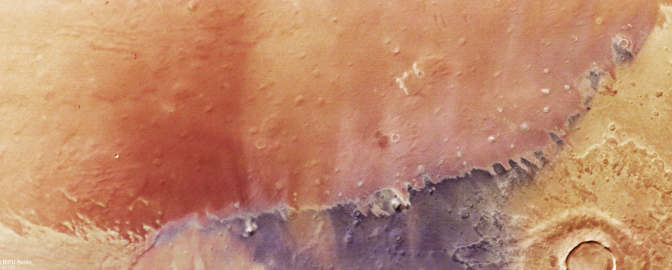Are we alone in the universe? AI may help us find out
A Planetary Society-funded project uses machine learning to search for intelligent alien life

Written by
Kate Howells
Public Education Specialist, The Planetary Society
March 10, 2025
The field of SETI research (the search for extraterrestrial intelligence) addresses one of the biggest mysteries facing humanity: whether we are alone in the Universe. This question is one that The Planetary Society’s science and technology programs try to help solve. As part of that endeavor, our STEP (Science and Technology Empowered by the Public) Grant program has provided funding to “Are We Alone? A Citizen-Science-Enabled Search for Technosignatures,” a project led by planetary astronomer Jean-Luc Margot of UCLA.
The project uses the 100-meter Green Bank Telescope in West Virginia to capture radio signals from 100 stars with known planets along with tens of thousands of additional stars and planetary systems. One major challenge in a search like this is to filter potential extraterrestrial signals from the immense volume of radio frequency interference (RFI) generated by earthly sources.
Megan Li, a Ph.D. student on the project, is working on this challenge using artificial intelligence. “To give you a sense of the volume of RFI we’re dealing with,” says Li, “two hours of observations using the Green Bank Telescope detects about 11 million instances of RFI. Before I joined UCLA SETI, there was already a protocol in place that automatically classifies 99.6% of these signals as RFI. However, that still leaves about 45,000 signals in each two-hour observation that need further analysis. Ideally, we would conduct SETI observations continuously, but manually inspecting those 45,000 signals would take at least 12 hours per two-hour observation.”

This is where artificial intelligence comes in. Volunteers on the Zooniverse citizen science platform help categorize known RFI patterns, training a machine learning system to conduct future searches faster and more efficiently. “The machine learning model we’re using is a convolutional neural network,” says Li, “which relies on iterative calculus to recognize similar patterns across images. This technology is similar to that used in self-driving cars: Just as we want a car to distinguish red from green lights, we want our model to reliably identify one type of radio frequency interference from another. We’re training the model to identify distinct RFI types because if its understanding of RFI is too broad, we risk discarding potential extraterrestrial signals. Thanks to the patterns labeled by our volunteers, we’re training the network to identify these specific RFI types.”
Caution is needed when using AI for SETI research. AI’s drive to maximize metrics like speed and efficiency can lead to problems. “AI might quickly ‘solve’ the question of whether a SETI search found ET by simply answering ‘no’ each time,” Li explains, “and such an answer would go unnoticed. Conversely, if AI leans too far toward identifying everything as ET-related, we face issues with model accuracy.” This is why the project uses AI to assist with specific tasks rather than making decisions about potential ET signals on its own.
Although AI research is a complex and growing field, Li emphasizes that it is accessible to everyone. “When I began this project in 2023, I had no prior experience with AI and only three years of basic Python programming under my belt. Starting out, I felt intimidated, and the entire endeavor seemed overwhelming. But today, I no longer feel that way. I am living proof that working with AI isn’t reserved for elite programmers; anyone can join in thanks to the plethora of free tools and resources available online.”
The potential for AI in SETI research also raises an intriguing possibility: If there are other technologically advanced civilizations out there using AI as a tool for exploration, one artificial intelligence could someday detect another. “One of the things I love about SETI,” says Li, “is how our ideas about contact evolve with humanity’s own experiences. The Drake Equation, a formula for estimating the probability of contact, has changed with us, sometimes factoring in civilization-ending risks like nuclear war or climate change. I imagine that some may already be advocating for an ‘AI-takeover’ variable!”
Support our core enterprises
Your gift today will go far to help us close out the year strong and keep up our momentum in 2026.
DonateThe Planetary Report • March Equinox
Help advance space science and exploration! Become a member of The Planetary Society and you'll receive the full PDF and print versions of The Planetary Report.


 Explore Worlds
Explore Worlds Find Life
Find Life Defend Earth
Defend Earth


